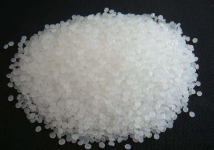read: 414 time:2025-06-26 13:06:09 from:化易天下
Phenols are a class of organic compounds that exhibit a higher acidity compared to regular alcohols. Understanding why phenols are more acidic in nature involves exploring the unique chemical structure of phenols and the resonance stabilization of their conjugate base. This article will delve into the factors contributing to the increased acidity of phenols, offering a detailed analysis that answers the question: why are phenols more acidic in nature?
The molecular structure of phenols is the first key to understanding their acidity. Phenols consist of a hydroxyl group (-OH) attached directly to an aromatic benzene ring. This configuration is crucial because the aromatic ring, being highly conjugated, has an extensive π-electron system. When phenols lose a proton (H⁺), the negative charge left on the oxygen atom is not localized; instead, it can be delocalized over the aromatic ring. This delocalization is due to the resonance between the oxygen atom and the π-electron system of the benzene ring, making the phenolate ion (the conjugate base of phenol) more stable.
This resonance stabilization is a primary reason why phenols are more acidic in nature compared to other organic compounds like alcohols, where the negative charge on the oxygen remains localized, leading to less stability of the conjugate base.
The resonance effect in phenols significantly contributes to their increased acidity. Upon deprotonation, phenol forms a phenoxide ion. This ion benefits from resonance structures that distribute the negative charge over the oxygen atom and the ortho and para positions of the benzene ring. The resonance forms, which can be represented by Lewis structures, illustrate that the negative charge is not confined to one atom but is spread over the aromatic system. This charge delocalization lowers the energy of the phenoxide ion, making it more stable than the non-resonating conjugate bases of aliphatic alcohols.
This stabilization is crucial to understanding why phenols are more acidic in nature. The more stable the conjugate base, the more likely the compound is to donate a proton, thereby increasing its acidity.
Another factor that influences the acidity of phenols is the inductive effect, especially when electron-withdrawing groups are present on the benzene ring. Substituents such as nitro (-NO₂), cyano (-CN), or halogens can withdraw electron density from the ring through the inductive effect, further stabilizing the phenoxide ion by making the ring more electron-deficient. This effect enhances the acidity of phenols because it makes it easier for the compound to lose a proton.
For example, p-nitrophenol is more acidic than phenol itself because the nitro group is a strong electron-withdrawing group that increases the resonance stabilization of the phenoxide ion. This illustrates an additional dimension to why phenols are more acidic in nature, as the presence and position of substituents can significantly impact the acidity.
To fully appreciate the acidity of phenols, it's useful to compare them with alcohols, which are structurally similar but much less acidic. Alcohols have an -OH group attached to a saturated carbon atom, where no resonance stabilization is possible. The conjugate base of an alcohol (an alkoxide ion) does not benefit from resonance and is therefore much less stable than the phenoxide ion. This lack of stabilization explains why phenols are more acidic in nature than alcohols.
The differences in acidity between phenols and alcohols highlight the importance of the benzene ring's resonance effect in determining acidity.
In summary, the question of why phenols are more acidic in nature can be answered by examining the resonance stabilization of the phenoxide ion, the structure of phenols, and the influence of electron-withdrawing groups. These factors collectively explain the heightened acidity of phenols compared to alcohols and other similar compounds. Understanding these chemical principles not only answers the fundamental question but also provides insight into the broader field of organic chemistry and acid-base behavior.

Jincheng Petrochemical's 300000 ton polypropylene plant successfully trial production, 2024 polypropylene market analysis

The ABS market remains sluggish, what is the future direction?

Market differentiation of bisphenol A intensifies: prices rise in East China, while prices generally decline in other regions

The production method and process flow of silicone acrylic lotion, and what are the common raw materials